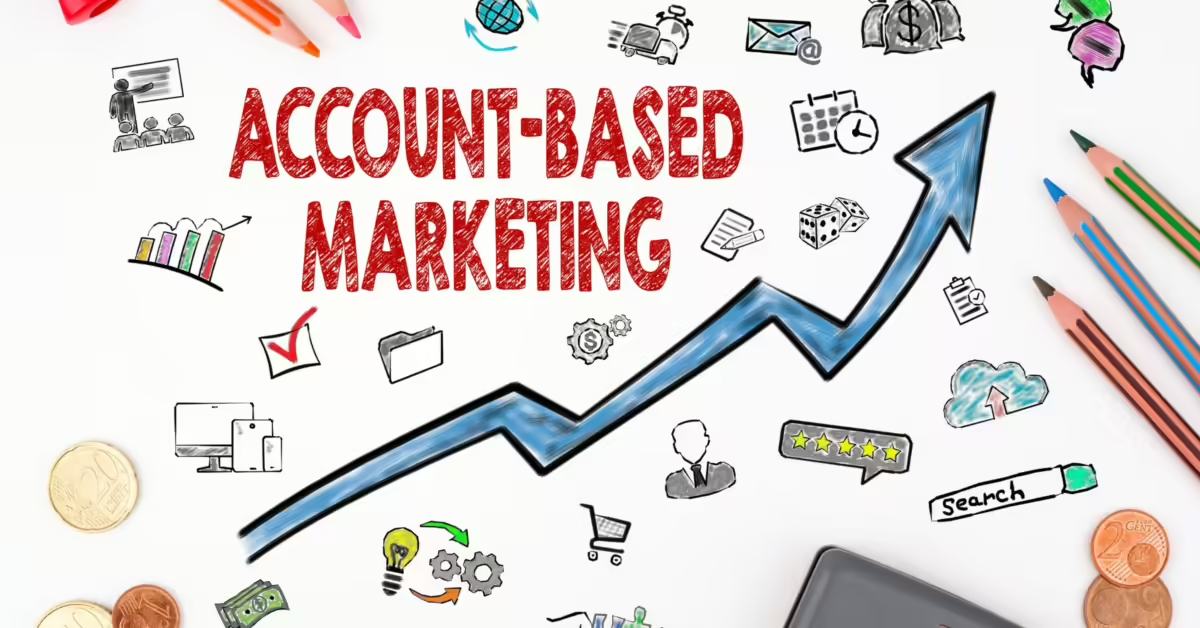Is your sales team drowning in repetitive tasks?
In today’s fast-paced business landscape, automation is transforming Go-To-Market strategies across various sectors. From streamlining sales processes to enhancing customer experiences, automation is not just a trend; it’s a necessity. Companies that embrace automation can significantly boost efficiency, allowing teams to focus on what truly matters—building relationships and driving growth.
Consider this: businesses that implement automation in their sales and marketing efforts see a 10% increase in productivity on average. This article will explore the myriad benefits of automation in different Go-To-Market motions, including direct sales, product-led growth, and account-based marketing.
As you read on, you’ll discover how automation can optimize your strategies, improve customer engagement, and ultimately maximize your return on investment. If you’re ready to elevate your Go-To-Market approach, feel free to reach out for more insights.
Streamlining Direct Sales with Automation: Unlocking Efficiency and Success

Automation in direct sales revolutionizes traditional processes, providing a seamless path to increased revenue and streamlined operations. For companies adopting direct sales models, automation transforms the way sales teams operate, resulting in more focused efforts and heightened productivity. The true value of automation lies in its ability to efficiently handle repetitive tasks, allowing sales teams to dedicate more time to building customer relationships and closing deals.
Enhanced Sales Productivity
One of the most profound impacts of automation is the boost in sales productivity. Automating routine tasks such as data entry, follow-up emails, and scheduling frees up time for sales representatives to concentrate on high-value activities. According to Marcus Williams, implementing automation can propel sales productivity by 14.5% and cut marketing overhead by 12.2%. This efficiency not only enhances the workflow but also increases the number of leads converted into customers.
Improved Lead Management
Automation excels at optimizing lead management, ensuring that sales teams target the right prospects at the right time. By automating lead scoring and nurturing, companies can prioritize leads, resulting in more effective sales strategies. As noted by Rohan Patel, understanding customer insights and aligning sales and marketing strategies can account for a 36% higher customer retention rate and 38% higher sales win rates. This illustrates how critical clear communication and lead management are in driving growth.
“Companies using marketing automation to nurture prospects see a 451% increase in qualified leads.” — Annuitas Group
Personalized Customer Interaction
Automation empowers sales teams to personalize communications without spending excessive time on each customer. It enables sales reps to tailor their messages based on the customer’s past interactions and preferences. This personalized approach has been proven to yield higher conversion rates. According to a study, personalized emails deliver six times higher transaction rates than their generic counterparts. By leveraging customer data, businesses can ensure their outreach resonates with individual customer needs.
Data-Driven Sales Strategies
The insights provided by automation tools guide sales teams in crafting more effective, evidence-based strategies. Access to real-time data allows for monitoring customer interactions, tracking campaign performance, and tweaking approaches as needed to optimize outcomes. This data-centric approach provides a competitive advantage, ensuring that resources are focused where they yield the most significant results.
In summary, the adoption of automation in direct sales leads to enhanced productivity, superior lead management, personalized communications, and data-driven strategies. As businesses look to further amplify these benefits, we will explore how automation continues to shape other go-to-market strategies in subsequent sections. Meanwhile, discover more about optimizing your sales strategy by exploring automation within your sales processes.
Elevating Customer Experience Through Automation in Product-Led Growth

Talking about product-led growth, companies face the challenge of providing seamless and personalized customer experiences at scale. Automation serves as a crucial tool in this mission by enabling businesses to efficiently manage vast customer interactions. By using automation strategically, companies can ensure every interaction feels personal and meaningful, driving customer loyalty and growth.
Delivering Personalized Experiences at Scale
Personalization is at the heart of customer satisfaction. Automation allows companies to gather and analyze large amounts of customer data to tailor experiences that are highly relevant.
“Today, the ability to deliver personalized experiences to customers is no longer a luxury but a necessity.” Master Marketing Automation Guide for SMEs
- Segmentation: Automated segmentation enables businesses to group customers based on behaviors, preferences, and demographics, enabling targeted messaging. A GroSamriddhi guide emphasizes how defining customer segments helps increase engagement.
- Dynamic Content Delivery: Automation tools can change content based on user behavior, ensuring relevance. For instance, automated emails with personalized product recommendations have been shown to increase click-through rates.
- Behavioral Triggers: Setting up automated responses based on user actions, such as sending reminder emails for abandoned carts, helps re-engage users and boost conversions (GroSamriddhi’s success stories offer insights into effective use cases).
Enhancing User Engagement with Data-Driven Insights
Leveraging data insights enables companies to craft more engaging and tailored experiences for their users.
- Actionable Analytics: Monitoring user behavior allows for adjustments in real-time. A Forrester report highlighted that businesses utilizing data-driven insights see significant improvements in user engagement.
- Continuous Optimization: By continuously optimizing automated campaigns based on analytics, businesses can keep content fresh and relevant, ensuring users remain interested (HubSpot’s guide provides insights on optimizing marketing funnels).
Expanding Reach Through Marketing Integration
Integration of marketing strategies with automation allows for a broader reach and a more cohesive user experience.
- Cross-Platform Integration: Ensuring automation tools are synchronized with CRM and social media platforms aids in presenting a united brand front, facilitating seamless user experiences.
- Unified Customer Journeys: Automation helps orchestrate customer journeys across different channels, maintaining consistency and enhancing loyalty. Companies can achieve this by keeping their marketing operations centralized (Salesforce insights discuss unified experiences).
By harnessing the power of automation, companies focused on product-led growth can elevate user experiences and maintain a competitive edge. Automation tools not only personalize at scale but also empower businesses to make informed, data-driven decisions. As companies continue to explore these strategies, it’s essential to remember that the journey doesn’t end with automation—engagement and satisfaction must be continuously fine-tuned to meet evolving customer expectations.
Scaling Marketing Efforts: Leveraging Automation in Account-Based Marketing

Automation is transforming the landscape of Account-Based Marketing (ABM) by empowering marketers to scale their efforts efficiently while maintaining a personalized touch. By integrating automation tools, companies can identify high-value accounts, engage with them through personalized content, and measure success seamlessly, resulting in a comprehensive strategy that drives significant customer engagement and business growth.
Precision Targeting with Data-Driven Insights
Automating ABM strategies begins with harnessing data to pinpoint target accounts. By analyzing existing customer data, such as demographics and purchase history, businesses can identify the most lucrative accounts to focus their efforts on. This data-driven approach not only enhances targeting precision but also optimizes resource allocation. AI-driven tools like predictive analytics can further refine this process by identifying patterns and prospects likely to convert.
Personalized Engagement at Scale
Once target accounts are identified, automation tools enable personalized engagement at scale. These tools can tailor messaging and content based on individual account characteristics, such as previous interactions and company size. Using dynamic content and behavioral triggers ensures each interaction is meaningful and relevant, fostering stronger relationships and higher conversion rates.
“Automation in ABM allows marketers to move from broad-based campaigns to tailored, one-on-one interactions that resonate more effectively with target audiences,” says Pranesh Nagarajan on LinkedIn.
Streamlining Multi-Channel Strategies
ABM strategies must embrace multi-channel marketing to maximize their impact. Automation facilitates cohesive communication across platforms like email, social media, and direct communication channels. This ensures a consistent message and experience across all touchpoints, reinforcing brand recognition and trust. As explained in another insightful article, integrating multiple channels creates a seamless customer journey that nurtures leads and accelerates purchase decisions.
Enhancing Efficiency with Task Automation
Automation also significantly alleviates the manual workload involved in managing ABM campaigns. Tasks such as lead scoring, email drip campaigns, and follow-ups can be automated, allowing marketing teams to focus on strategy development and creative tasks. Automating these repetitive tasks improves efficiency and ensures timely and relevant follow-ups, enhancing customer satisfaction and retention.
In summary, leveraging automation in Account-Based Marketing empowers businesses to reach the right audiences more effectively and efficiently. By integrating automation tools, marketers can deliver personalized experiences on a large scale, ensuring meaningful engagement with high-value accounts. As companies continue to realize these benefits, it’s crucial to focus on guidelines for optimizing channel partnerships, maximizing collaboration, and driving growth.
Optimizing Partnerships: Revolutionizing Indirect Sales Models with Automation
As businesses strive to expand their reach and maximize profits, channel partnerships have emerged as an indispensable strategy in indirect sales models. However, managing these partnerships efficiently can be a daunting task, often plagued by inconsistencies and inefficiencies. Automation provides an answer—a suite of tools that streamline processes, enhance data flow, and foster collaboration, offering a seamless experience for all stakeholders involved.
Elevating Communication with Automated Workflows
Inconsistent communication between partners can lead to missed opportunities and strained relationships. Automation tools address this issue by establishing automated workflows that ensure timely updates and information sharing. For instance, platforms like Hubspot and ActiveCampaign facilitate automated email campaigns that keep partners informed about new product launches, promotions, and policy changes. This not only maintains engagement but also strengthens trust across the network.
“Choosing the appropriate tools that align with your requirements and objectives supports you in laying a solid foundation for successful implementation.” – Joseph Mucira
Empowering Data-Driven Decision-Making
Automation tools offer a treasure trove of analytics, enabling better strategic decision-making. By aggregating data from various partners, businesses can identify trends, forecast demand, and tailor product offerings to meet market needs. According to a study by Salesforce, integrating analytics into partnerships results in improved customer experiences and productivity gains. Automated data synthesis tools enhance accuracy and eliminate biases, fostering an agile approach to partnership management.
- Monitor engagement through real-time dashboards
- Analyze customer feedback and adjust strategies accordingly
- Track partner performance metrics to identify high-performing alliances
Simplifying Logistics and Distribution
One of the primary benefits of automation in channel partnerships is its ability to streamline logistics. By automating inventory management and order processing, businesses can minimize errors and accelerate the supply chain. Research from Klaviyo outlines how automated systems improve stock tracking and forecasting accuracy, ultimately reducing overhead costs and ensuring timely delivery. This efficiency not only cuts down on logistical headaches but also enhances partner satisfaction.
Maximizing ROI with Targeted Marketing Efforts
In an indirect sales model, marketing efforts must be both wide-reaching and finely tuned to individual partner needs. Automation enables precision marketing by channeling the right messages to the right partners at the right time. For example, tools that tailor promotions based on partner-specific data, ensuring high relevance and maximizing investment returns. By personalizing marketing campaigns, businesses can increase partner loyalty and market penetration.
Ensuring Compliance and Security
With a vast network of partners, maintaining data compliance and security is pivotal. Automation tools facilitate secure data transfer and ensure compliance with regulations like GDPR and CCPA. By standardizing data protocols, businesses mitigate risks associated with data breaches and non-compliance, building a trust-based partnership ecosystem. According to Joseph Mucira Exclusives, embracing automation not only safeguards information but also enhances operational transparency.
Automation offers a transformative approach to managing channel partnerships, improving efficiency, decision-making, logistics, and marketing efforts. As partners gain from streamlined processes and better execution, businesses see a marked improvement in ROI. In the next section, we’ll explore how automation can further catalyze customer-centric strategies and broaden horizons in indirect sales models.
Personalizing Customer Engagement: The Power of Automation
Creating unique and personalized interactions with every customer is key to staying competitive. Many brands are realizing that automation is no longer just a tool for convenience but a powerful enabler of personalized customer-centric strategies. By harnessing automation, businesses can deliver tailor-made experiences that not only captivate but retain their audience.
The Magic of Dynamic Segmentation
Consider dynamic segmentation as the backbone of personalized marketing strategies. Unlike static segments, which can quickly become obsolete, dynamic segmentation updates customer groups using real-time data and behavior. This agility allows businesses to remain relevant in their messaging.
- Real-time Adaptation: Automation tools like Hubspot allow segments to evolve based on customer interactions, ensuring content remains relevant and engaging.
- Enhanced Customer Journeys: By utilizing lead scoring and triggered workflows, businesses can significantly improve the efficiency of customer conversions.
- Refinement through Analytics: Continuously analyzing and refining segmentation criteria help businesses stay ahead in understanding their audience’s needs.
Leveraging AI for Hyper-Personalization
The integration of Artificial Intelligence in automation has revolutionized how businesses craft personalized experiences. AI-driven tools can analyze extensive customer data to curate highly individualized content, predicting needs and optimizing engagement.
- Customized Interactions: Businesses can use AI to predict preferences and tailor content, ensuring interactions feel personal and relevant.
- Behavioral Insights: By analyzing customer behavior, AI can trigger specific actions such as customized product recommendations, driving a personalized experience.
- Improved Engagement: Implementing AI tools has led to increased engagement rates—demonstrating that a hyper-personalized approach resonates well with audiences.
Multi-Channel Integration for a Cohesive Experience
In today’s multi-platform world, customers interact with brands across various channels. A unified approach ensures a seamless experience, no matter where these interactions happen.
- Cross-Channel Consistency: Maintaining consistent messaging and syncing data across platforms ensures customers receive the same quality of interaction everywhere.
- Engagement Tracking: Using automation to trigger actions based on cross-channel behavior helps refine customer journeys for maximum engagement. This can be backed by real-world studies like those from Salesforce, which emphasize improved customer satisfaction.
- Crafting a Unified Story: Integrating data from social media, emails, and other customer touchpoints help craft a consistent narrative, enhancing overall brand presence.
Balancing Personalization with Data Privacy
While personalization enhances customer engagement, it’s imperative to prioritize data privacy. With growing regulations around data protection, ensuring transparent data usage is crucial for building trust.
- Adhere to Data Regulations: Implement robust security measures and transparent data collection processes to comply with GDPR and similar regulations.
- Earning Customer Trust: Offering customers insights into how their data is used—and allowing them control—fosters a trusting customer relationship.
- Avoiding Overstep: Steer clear of over-personalization by using only willingly provided data, thus respecting customer boundaries while crafting personalized messages.
Monitoring and Optimizing Personalization Strategies
To maximize personalization effectiveness, constant monitoring and optimization are essential. Employing automation tools to track and refine strategies based on performance metrics can ensure ongoing success.
- Engagement Metrics: Regularly tracking key engagement and conversion metrics can identify areas of improvement within personalized campaigns.
- Performance Feedback Loops: By creating feedback loops, businesses can adjust and enhance campaigns, ensuring strategies remain effective and aligned with audience preferences.
- Data-Driven Decision-Making: Utilize insights from analytics to make informed decisions about updates to personalization tactics.
In leveraging automation for personalization at scale, businesses can redefine customer engagement. This paves the way for more meaningful interactions, leading to loyal customers and sustained growth. Stay tuned as we explore the conclusion and share strategies to maximize your return on investment through refined automation efforts.
Data-Driven Decision Making: Automation’s Contribution to Agile Go-To-Market Approaches

Harnessing the power of automation elevates decision-making processes across various business areas, especially in agile go-to-market strategies. By leveraging real-time data, companies can adapt swiftly to market changes, optimizing their tactics to drive success. This approach not only streamlines operations but also ensures that every strategic move is backed by robust data insights.
Leveraging Real-Time Analytics for Strategic Flexibility
In the dynamic market environment, having access to real-time analytics is invaluable. Automation tools offer instant data processing capabilities, allowing businesses to make informed adjustments swiftly. For instance, AI-driven sentiment analysis can quickly parse customer feedback across platforms to detect trends and opinions. This immediate insight enables companies to address issues proactively, thus enhancing customer satisfaction and retention.
“Real-time analytics empower businesses to become agile, enabling quicker reactions to market fluctuations while maintaining a customer-centric approach.”
Enhancing Predictive Accuracy With Automated Models
Predictive analytics models are crucial for foreseeing market dynamics and consumer behavior. Automation enhances these models by integrating continuously updated data sets, improving accuracy. In the e-commerce sector, businesses like Leo Coffee have utilized automation to increase their store conversion rates by 125% . Automated insights enable companies to anticipate consumer actions and adjust marketing strategies accordingly with impressive precision.
Reducing Operational Constraints Through Workflow Automation
Automation reduces operational workloads by streamlining repetitive tasks such as data entry and reporting. The shift towards no-code platforms empowers team members, regardless of technical expertise, to create and adjust automated workflows. FlutterFlow exemplifies this by enabling organizations to build applications without extensive coding knowledge. This results in quicker deployment times and more efficient resource utilization.
- Simplifying routine administrative tasks
- Enhancing cross-departmental communication and data sharing
- Improving overall workflow efficiency
The strategic use of automation can propel businesses towards optimal agility, keeping them competitive and customer-focused. Each strategy discussed here underscores the critical role of data-driven automation in crafting responsive go-to-market motions that are both effective and adaptable. For deeper insights and actionable ways to integrate these practices, stay tuned for our upcoming conclusion and call to action, where we will introduce the final steps to mastering automation in modern business strategies.
Maximizing ROI: Measuring the Impact of Automation Across Different Go-To-Market Motions
Streamlining Processes for Measurable ROI
The relationship between automation and maximizing return on investment (ROI) is undeniable. As companies streamline processes across various go-to-market motions, they see tangible improvements in efficiency and outcomes. By optimizing ad campaigns and targeting the right audience, businesses can increase their Return on Ad Spend (RoAS). This approach involves closely monitoring key metrics such as cost-per-acquisition (CPA) and conversion rates to make data-driven decisions (groSamriddhi).
Enhancing Marketing Operations
Marketing automation allows businesses to increase efficiency and improve customer engagement. Midsize companies using marketing automation experience up to a 14.5% increase in sales productivity and a 12.2% reduction in marketing costs. With tools that automate repetitive tasks, marketing teams can focus on strategy and content creation. This streamlines operations and equips teams with valuable analytics, refining campaigns to maximize ROI further.
Leveraging Data for Informed Decisions
Data-driven decision-making is a cornerstone of optimizing ROI through automation. Businesses using automation have access to analytics that provide insights into customer behavior, enabling them to refine their strategies accordingly . These insights reveal customer interaction patterns and overall campaign efficacy, allowing companies to adjust their approaches based on what the data reveals. Leveraging such detailed data ensures that marketing efforts are both effective and efficient.
Implementing Personalization at Scale
Automation enhances the ability to personalize customer experiences at scale. Personalized email campaigns deliver six times higher transaction rates than non-targeted emails. By utilizing automation, businesses can segment their audience based on behaviors and preferences, thus fine-tuning their messaging. This not only boosts engagement but also conversion rates, driving higher ROI.
Expanding Marketing Reach Cost-Effectively
Automation tools also empower businesses to maintain consistent multichannel campaigns without overwhelming resources. With the help of these tools, small and medium enterprises (SMEs) can extend their reach, consistently communicating their brand message across various platforms. This cost-effective approach ensures a broad audience, impacting ROI significantly. The effective use of automation can lead to a 451% increase in qualified leads (Annuitas Group).
To sum up, automation plays a pivotal role in maximizing ROI through streamlined processes, data-driven decision-making, and scalable personalization. As businesses successfully leverage automation, they position themselves for notable growth and enhanced market competitiveness. Next, we will explore practical strategies for implementing these insights into your business processes to maximize impact and reap the benefits of automation further. If you’re ready to transform your marketing with automation, don’t hesitate to book a meeting with our experts today.
Embracing Automation for a Competitive Edge
Automation is vital for modern Go-To-Market strategies. Throughout the article, we explored how automation enhances sales efficiency, personalizes customer experiences, scales marketing efforts, and optimizes partnerships. These benefits contribute to better decision-making and improved ROI, making automation essential for any brand looking to thrive in today’s fast-paced business environment.
Understanding automation’s advantages is crucial for remaining competitive. Companies that leverage these tools can improve operational efficiency and deliver exceptional customer value. As businesses grow and evolve, staying ahead with automation becomes a key focus for success.
For further insights and a customized approach to implementing automation in your Go-To-Market strategy, reach out to us today. Contact Us to discover how we can help you harness the power of automation.




